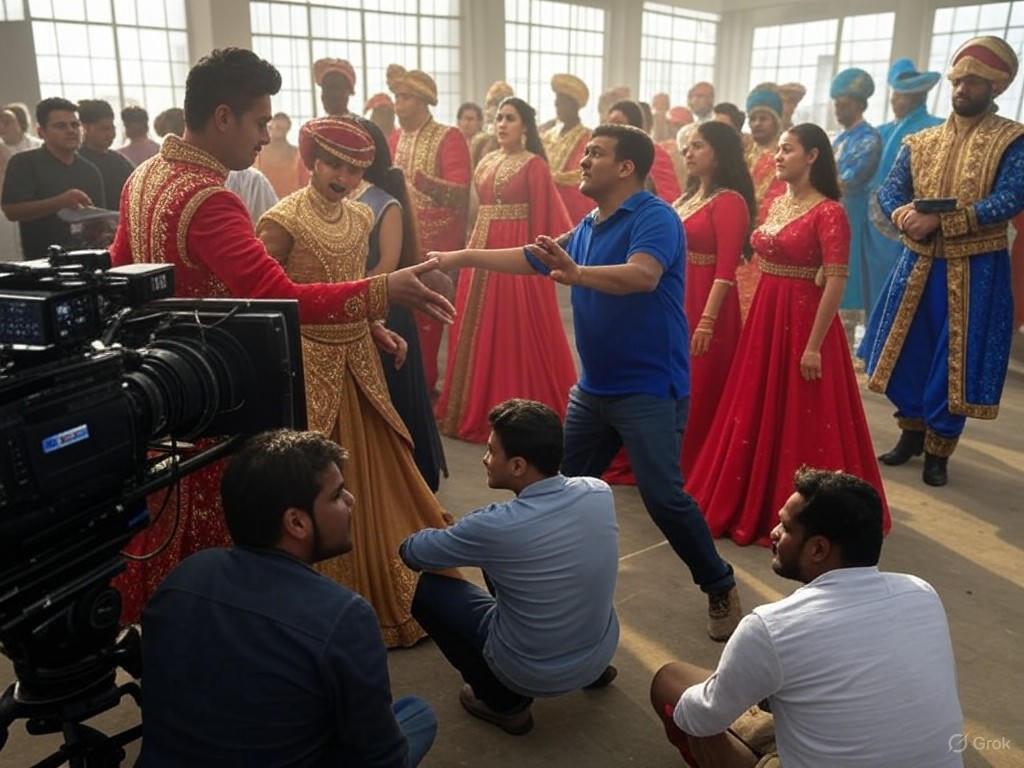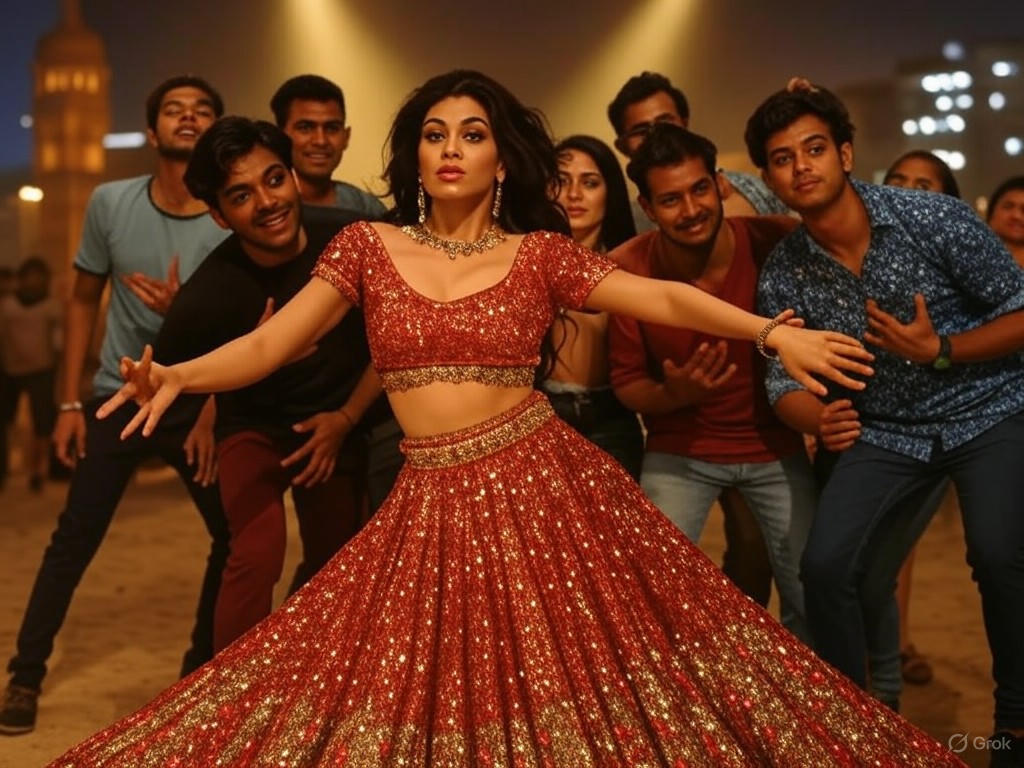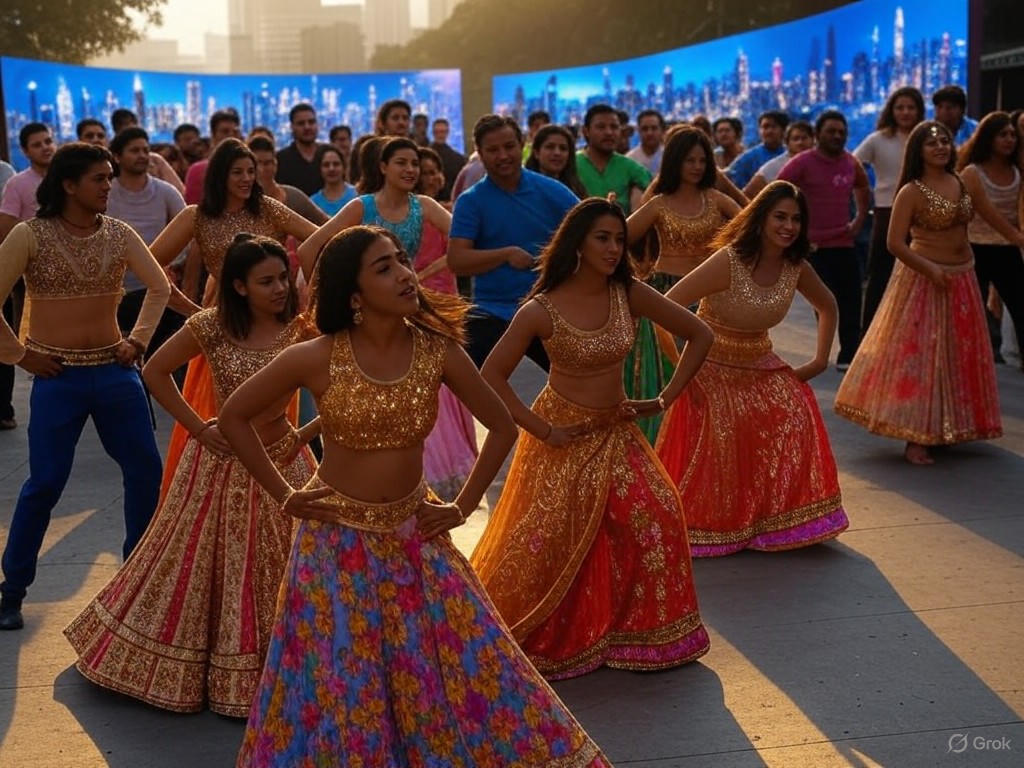Bollywood’s Global Reach: Cinematic Influence
In the vibrant tapestry of global pop culture, Bollywood stands as a testament to the enduring power of storytelling, rhythm, and melody. Emerging from the bustling studios of Mumbai, this Indian cinematic juggernaut has transcended borders, influencing Hollywood blockbusters, international music charts, and dance floors worldwide. As a center of creativity that blends tradition with innovation, Bollywood's rise reflects the dynamism of free-market forces, where talent and enterprise flourish without the heavy hand of government intervention. Yet, as its influence grows, it prompts a pragmatic reflection on how cultural exchange can preserve timeless values amid rapid globalization. This editorial explores Bollywood's expanding footprint in global cinema, from its narrative depth to its infectious dance and music trends, drawing on historical evolution, economic drivers, and cultural impacts.

A bustling Mumbai film set captures the collaborative energy that fuels Bollywood's market-driven success, where creativity thrives on innovation rather than subsidies.
The Roots and Rapid Expansion of Bollywood's Global Reach
Bollywood, the colloquial term for the Hindi-language film industry centered in India, has roots stretching back to the early 20th century, when silent films gave way to talkies that fused local folklore with dramatic flair. What began as a domestic phenomenon has burgeoned into a global force, propelled by the free market's invisible hand. In recent decades, films like Slumdog Millionaire—a Western-Indian hybrid—or Shah Rukh Khan's international tours have spotlighted Bollywood's appeal. According to data from the Film Federation of India, the industry now produces over 1,500 films annually, generating billions in revenue and reaching audiences in over 150 countries. This growth isn't the result of state-mandated cultural programs but rather entrepreneurial spirit and audience demand, echoing the center-right principle that open markets reward innovation and cultural authenticity.
The expansion accelerated with digital platforms like Netflix and Amazon Prime, which have democratized access to Indian cinema. A 2022 analysis by the Wall Street Journal highlights how streaming services have bypassed traditional distribution barriers, allowing films such as RRR to amass global viewership without relying on government subsidies. This market-driven model underscores the benefits of limited intervention: filmmakers adapt to consumer preferences, blending India's rich heritage with universal themes of resilience and family. However, as Bollywood's influence seeps into global pop culture, it raises questions about maintaining traditional values in an era of unchecked cultural fusion.
Storytelling Innovations: Bollywood's Narrative Blueprint for Global Cinema
At the heart of Bollywood's allure is its storytelling prowess, which weaves epic tales of love, triumph, and moral clarity into films that often span three hours or more. Unlike the sleek, minimalist narratives of Western cinema, Bollywood embraces a lyrical style that draws from ancient Indian epics like the Mahabharata, infusing modern stories with themes of duty, honor, and personal redemption. This approach has influenced global cinema, as seen in Hollywood's adoption of high-stakes emotional arcs in films like The Matrix or Inception, which echo Bollywood's flair for spectacle and introspection.
Evidence of this cross-pollination abounds. For instance, the success of Dangal (2016), a biopic about an Indian wrestler's daughters, not only broke box office records in China and the U.S. but also inspired narratives in Western sports dramas that emphasize family legacy and individual grit Variety. Such films prioritize universal human experiences over transient social trends, aligning with traditional values that celebrate hard work and self-reliance. Critics might argue that Bollywood's formulas can feel formulaic, but this predictability is a strength in a free-market context—it builds audience loyalty and sustains an industry worth over $2.5 billion annually, as reported by the Ernst & Young India report on media and entertainment. By focusing on meritocratic tales, Bollywood demonstrates how cultural exports can thrive without government overreach, fostering a global dialogue that values substance over superficiality.
Dance and Music Trends: The Rhythmic Pulse of Global Pop Culture
No discussion of Bollywood would be complete without its signature dance sequences and musical scores, which have revolutionized global pop culture. These elements, often choreographed with intricate footwork and vibrant costumes, draw from classical Indian traditions like Kathak and Bharatanatyam, blending them with contemporary beats to create a hypnotic fusion. Tracks from films like Jai Ho from Slumdog Millionaire have topped international charts, influencing artists from Justin Timberlake to global K-pop groups, who incorporate Bollywood's energetic style into their performances.
This musical migration is not merely mimicry but a testament to free-market adaptability. As Billboard noted in a 2020 feature, Bollywood soundtracks have generated over $100 million in streaming revenue outside India, driven by platforms that prioritize consumer choice over regulated content. Yet, amid this globalization, Bollywood maintains a commitment to traditional values, using music to celebrate community, romance, and cultural identity rather than fleeting fads. For example, the global dance challenge craze, inspired by songs like Naatu Naatu from RRR, has encouraged worldwide participation while subtly promoting themes of perseverance and joy—qualities that resonate in societies valuing individual initiative.

Dancers in a lively Bollywood sequence exemplify the genre's ability to merge traditional Indian rhythms with global appeal, fostering cultural exchange through market dynamics.
Economic and Cultural Implications: A Balanced View from a Center-Right Lens
As Bollywood's influence permeates global cinema, its economic and cultural ramifications warrant scrutiny. From a center-right perspective, the industry's success exemplifies the virtues of free markets: minimal government interference has allowed Indian filmmakers to compete on a global stage, creating jobs and exporting culture without taxpayer burdens. India's film policy, which emphasizes deregulation over subsidies, contrasts with more interventionist models elsewhere, enabling Bollywood to adapt swiftly to digital shifts and audience tastes The Economic Times. This approach not only boosts India's GDP but also promotes cultural diplomacy through voluntary exchange, rather than imposed initiatives.
However, this growth is not without challenges. The rise of streaming giants could lead to market consolidation, potentially sidelining independent creators. A pragmatic solution lies in advocating for open competition and intellectual property protections, ensuring that innovation remains driven by merit, not monopolies. Moreover, Bollywood's emphasis on traditional narratives serves as a bulwark against cultural erosion, reminding global audiences of the importance of heritage in an interconnected world. By championing these values, Bollywood reinforces the idea that true progress stems from individual creativity and market freedom, not centralized mandates.
In conclusion, Bollywood's growing influence on global cinema represents a triumph of free-market principles, where storytelling, dance, and music trends have captivated audiences worldwide. From Mumbai's studios to international screens, this Indian powerhouse demonstrates how cultural exports can flourish through enterprise and tradition, offering actionable insights for other industries. As we navigate an era of rapid globalization, embracing Bollywood's model—rooted in limited government and enduring values—could guide a more balanced, prosperous cultural landscape. Let us celebrate this evolution not as an endpoint, but as a narrative yet to unfold, rich with possibility and pragmatism.

